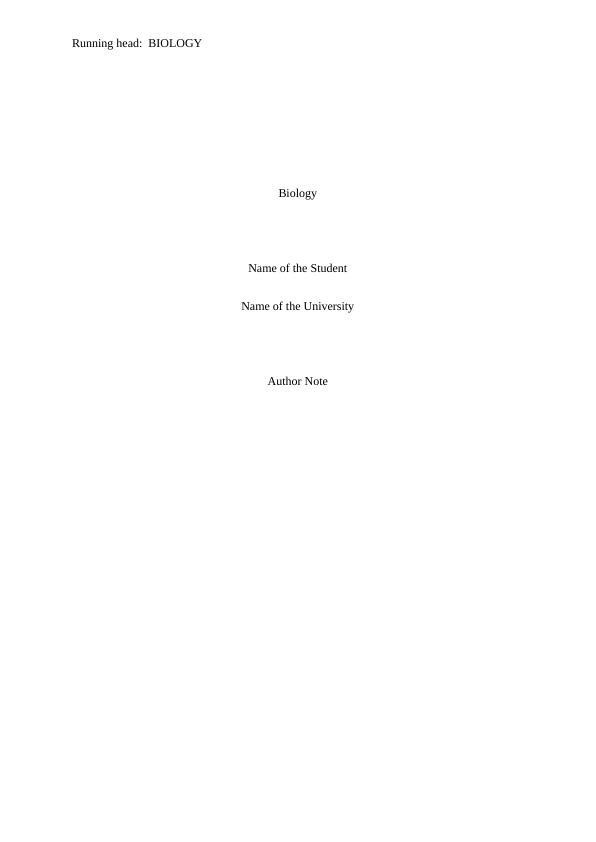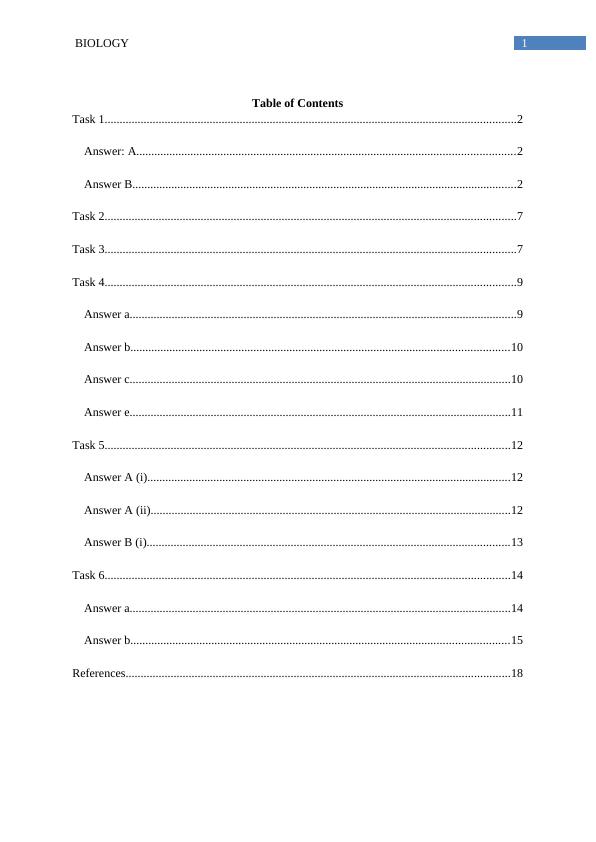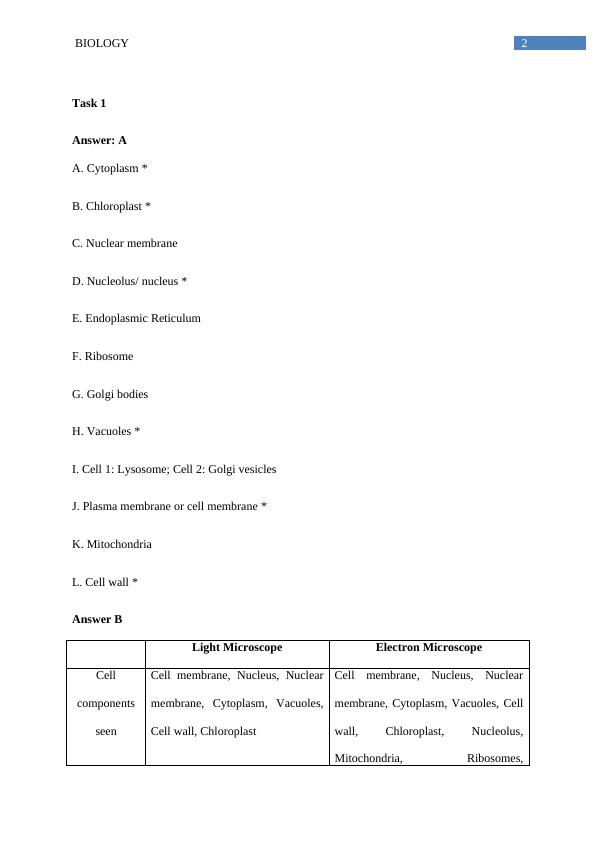Biochemistry Name of the University Author
18 Pages2748 Words113 Views
Added on 2020-04-13
About This Document
5 BIOLOGY BIOLOGY Biology Name of the Student Name of the University Author Note Task 1 2 Answer: A 2 Answer B 2 Task 2 7 Task 3 7 Task 4 9 Answer a 9 Answer b 10 Answer c 10 Answer e 11 Task 5 12 Answer A (i) 12 Answer A (ii) 12 Answer B (i) 13 Task 6 14 Answer a 14 Answer b 15 References 18 Task 1 Answer: A A. Cell wall * Answer B Light Microscope Electron Microscope Cell components seen
Biochemistry Name of the University Author
Added on 2020-04-13
ShareRelated Documents
End of preview
Want to access all the pages? Upload your documents or become a member.
Electron Microscope - Assignment
|6
|1308
|122
Biology in Everyday Life: Cell Structure and Function
|5
|1355
|94
Cell Types in the Human Digestive System: Red Blood Cells, Kupffer Cells, Goblet Cells, Enterocytes, Chief Cells
|4
|1367
|244
Cell Biology and Biochemistry
|8
|2140
|1
Biology Mock Exam Paper with MCQs and Diagrams
|21
|3905
|65
The structure of the cell. 9 The structure of the cell
|14
|2919
|55




